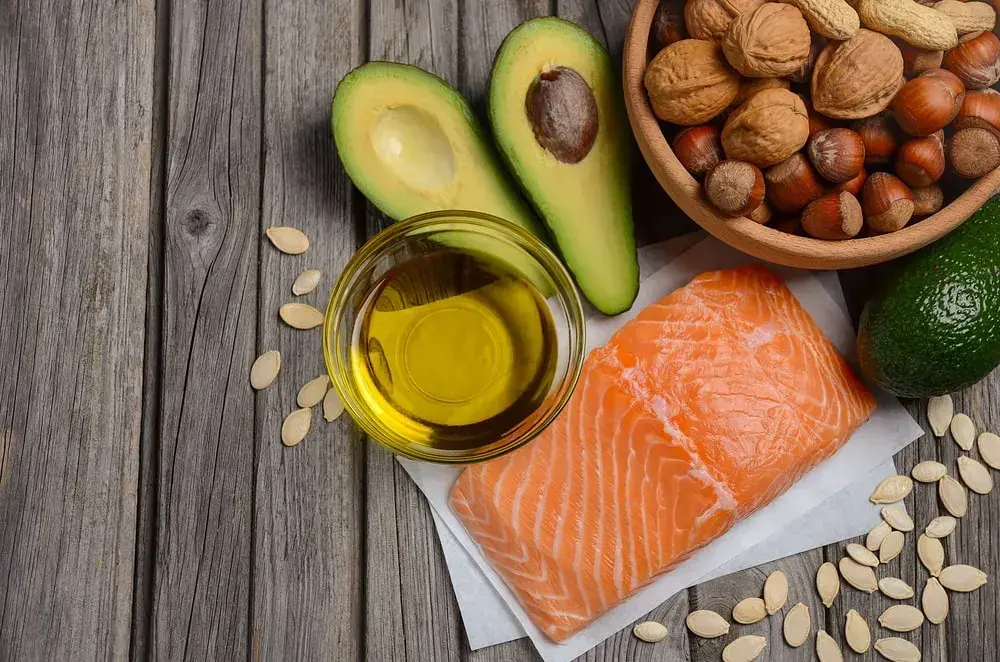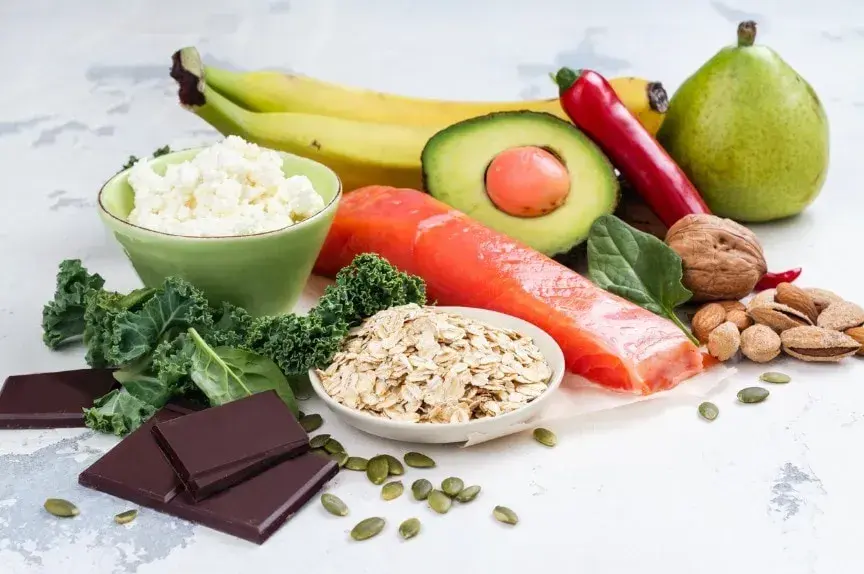
/assets/images/provider/photos/2579975.jpg)
You may think of belly fat as uncomfortable, inconvenient, and unsightly, but did you know it’s also dangerous? Carrying extra fat around the midsection poses greater health risks than just being overweight in general, because it surrounds the internal organs. Of all the places on your body to carry excess fat, the fat in your abdominal region offers the most serious health risks.
Unlike subcutaneous fat, which is located directly under the skin,visceral fat around the internal organs can lead to health problems including cancer, type 2 diabetes, high blood pressure, sleep apnea, cardiovascular disease, and premature death. Fortunately, you can reduce the amount of visceral fat in your abdominal region by making a series of healthy lifestyle changes.
Why is visceral fat so dangerous?
People who have a normal body weight are still at risk for serious health issues if they have excess belly fat. A person with 25 extra pounds of visceral belly fat may face more health problems than someone with 50 extra pounds of subcutaneous fat distributed around their body.
Visceral fat lies below the abdominal muscles and deep in the abdominal cavity, surrounding the organs. Visceral fat is more threatening than fat directly under the skin due to the way it triggers inflammation and compromises the health and function of major organs including the liver, pancreas, and kidneys.
How belly fat accumulates
Belly fat is commonly caused by lack of physical activity and poor nutrition. Evidence suggests that people who sit down to watch more than three hours of television per day have twice the amount of belly fat than those who watch less than one hour of TV per day. A sedentary lifestyle has also been shown to cause regain of belly fat even after weight loss.
People who consume high amounts of sugary foods and refined carbs tend to be at a higher risk of gaining excess belly fat due to the way these foods cause an imbalance in hormones like insulin and cortisol. These hormonal imbalances increase the risk of type 2 diabetes, heart disease, stroke, and other serious medical conditions.
Low protein intake, low fiber intake, menopause, bad gut bacteria, and chronic stress are other factors that can lead to extra belly fat.
Can belly fat be targeted?
Belly fat that you can see and pinch with your fingers is subcutaneous fat, which can be reduced with regular exercise, good nutrition, and loss of total body fat. Spot-reduction exercises like ab crunches and sit-ups are mainly ineffective at reducing both subcutaneous fat and visceral belly fat.
Compared to subcutaneous belly fat, visceral belly fat is often much easier to target. Getting more sleep, reducing stress, and eating certain foods can help you lose visceral belly fat and reduce your risk of heart disease, cancer, and other related medical conditions.
How long does it take to lose belly fat?
The amount of time it takes for you to lose unwanted belly fat will depend on your daily habits and lifestyle. If you’re consistent with healthy lifestyle behaviors such as exercising regularly, getting plenty of sleep, and managing stress, you may be able to reduce your belly fat in as little as two weeks.
Generally, one pound of fat is equal to about 3,500 calories — meaning you’ll need a deficit of 3,500 calories to lose one pound. That deficit can come from cutting calories from your diet as well as burning calories through exercise. Stay physically active, reduce your alcohol intake, eat healthy foods, and practice other healthy behaviors that contribute to weight loss.
Be aware though, that diet and exercise may not be effective on their own if you’re dealing with hidden health issues such as inflammation and hormonal imbalances — both of which can make it difficult for you body to shed excess weight. Genetic variants also play a role in how your body processes and uses the calories you take in.
Exercises to lose belly fat
Burpees, mountain climbers, and yoga are just some exercises proven effective at helping to reduce belly fat.
Burpees work all major muscle groups. Begin by standing with your feet shoulder-width apart, then bend forward and rest your palms on the floor at about the same width as your feet. Jump your legs backward into a push-up position, do a push-up, then reverse the movement and jump when you stand. This explosive workout movement can help you shed excess fat relatively quickly.
Mountain climbers are like a variation of a moving plank, where you “climb a mountain” while facing the floor. Get into plank position, with your hands below your shoulders and your body forming a straight line. Lift one of your feet off the floor and drive the knee toward your chest, tapping the floor with your foot. Then, return to the starting position and do the next leg.
Talk to a fitness trainer or watch YouTube videos to learn the proper form for these exercises if you’re not sure whether you’re doing them correctly. Practicing the right form is key to staying safe and losing weight when doing these workout moves.
What else can you do to lose belly fat? Adopt the following 10 evidence-based approaches to lose visceral belly fat and improve your overall health and longevity.
1. Move it to lose it
Resistance training is a great way to build muscle and increase your metabolism for long-term weight management, but cardio exercise is the key to getting rid of stubborn belly fat. Studies show that aerobic exercise can help you lose visceral belly fat even if you don’t make changes to your diet.
Do exercises and activities that speed up your heart rate such as swimming, cycling, and running. Jogging about 12 miles per week has also been shown to effectively reduce abdominal fat. If you don’t enjoy running, start walking at a brisk pace to reap many of the same health benefits.
2. Enjoy tea time
Drinking green tea can enhance the results of physical activity and burn off belly fat. Antioxidants in green tea can boost your metabolism and increase the body’s production of a hormone that helps you break down fat. Drink two or three cups of green tea per day to reduce excess belly fat. If you don’t like the flavor of plain green tea, try flavoring it with natural honey, Stevia, lemon, or grapefruit. You can also take green tea extract in pill form.
3. Reduce your stress levels
Managing stress can reduce your body’s production of a stress hormone called cortisol. Having high amounts of cortisol in your body long-term can contribute to inflammation, hormonal imbalances, and abdominal fat gain. Experiencing stress every now and then is normal, but chronic stress increases your body’s cortisol production, which in turn triggers weight gain.
Research shows that postmenopausal women who engage in yoga for 16 weeks can experience a significant decrease in visceral fat. Other stress-relieving activities can have a similar effect — especially meditation, which has been shown to promote weight loss in addition to reducing stress.
4. Increase your protein intake
Protein decreases the appetite while increasing the metabolism. Insulin resistance increases with age regardless of weight, which makes you more susceptible to storing fat. Eating more protein can improve insulin resistance and help your body stave off weight gain while burning away belly fat.
Start consuming higher amounts of protein-rich foods such as eggs, fish, and beans. Stick to lean proteins and plant-based proteins for better health. Green smoothies with protein powder are a delicious, low-calorie way to boost your protein intake.
5. Eat more healthy fats
Yes, you read that right. Our bodies need fat to live — they just need the right fats. The typical American diet includes too much saturated and trans fats and not enough unsaturated fat. Trans fats increase LDL (bad) cholesterol and lower your HDL (good) cholesterol. A diet high in trans fats increases your risk of heart disease, stroke, and type 2 diabetes.
Not only do trans fats contribute to serious health problems, but they are also linked to increased belly fat. Many processed and fried foods like donuts, cakes, pie crusts, and margarine spreads contain trans fats. The FDA says trans fats are no longer “generally recognized as safe.”
Fortunately, it’s easy to avoid processed foods that contain trans fats: simply look for “partially hydrogenated” oils on the ingredients list. If you see those words, take a pass on that food. With all the healthy, trans-fat free options available today, it’s easier than ever to say goodbye to these processed fats. This is a step in the right direction for overall health, not just a slimmer waistline.
Examples of healthy fats you should be eating include fish, nuts, seeds, olives, olive oil, and avocados.
6. Sleep it off
Sleep is essential to good overall health and weight management. People who suffer from sleep deprivation tend to gain more weight — including visceral belly fat. In addition to reducing belly fat, getting between 7 and 8 hours of sleep per night can reduce stress and improve mood, cognition, and heart health. Getting enough sleep is a vital component of a healthy weight-loss program.
If you’re experiencing sleep disturbances due to obstructive sleep apnea, seek treatment for your condition immediately, since sleep apnea is linked to an increase in visceral belly fat. Natural ways to improve sleep apnea include exercising regularly, quitting smoking, and reducing the use of alcohol and sedatives.
A sleep study can determine whether you have sleep apnea or other sleep problems. If you snore or stop breathing during the night, or you wake up tired and groggy despite getting “enough” sleep, talk to your doctor.
7. Cut back on carbs
Reducing carb intake can improve your overall metabolic health and help you lose visceral belly fat. Replace refined carbs like pasta, white bread, and pastries with unprocessed complex carbs like spaghetti squash, beans, and vegetables. Refined carbs will spike the body’s insulin level and increase your risk of inflammation and belly fat.
Avoid sugary foods and drinks, since high sugar intake can overload your liver and prevent it from effectively metabolizing all the fructose — which then gets turned into fat. Replace sugary foods with whole fruit, since the natural fructose in fruit is offset by fiber, vitamins, and other nutrients that boost your overall health.
8. Eat higher amounts of fiber
High-fiber foods can help you feel full so you eat less and consume fewer calories. Soluble fiber absorbs water and forms a gel-like substance that slows the passing of food through the digestive system. A study conducted on abdominal fat gain found that for every extra 10 grams of soluble fiber consumed, belly fat decreased by 3.7% within a 5-year period.
Foods high in soluble fiber include black beans, avocados, sweet potatoes, Brussels sprouts, flaxseed, kidney beans, and broccoli. Work with your weight-loss doctor on developing a personalized nutrition plan that includes foods high in fiber to accelerate loss of belly fat.
9. Track the foods you’re eating
Tracking your food gives you a clear view of what and how much you’re eating throughout the day. A food journal or app can help you stay conscious of the nutrition choices you’re making and the substances you’re putting into your body. Sometimes it can be easy to lose track of the snacks you eat — all of which can contribute to increased belly fat.
Start the habit of keeping a food journal and write down every single thing you eat, drink, and put into your body — including medications and supplements. A food journal also provides your doctor with insight into whether your nutrition habits are interfering with weight loss.
10. Cut back on alcohol intake
Reduce alcohol use or consider eliminating alcohol completely from your diet until after you’ve achieved and maintained a healthier weight. Drinking on a moderate or heavy basis can interfere with your weight-loss efforts and even cause weight gain. Heavy alcohol consumption is linked to a significantly heightened risk of excess belly fat, and is defined as 15 drinks or more per week for men, and 8 drinks or more per week for women.
Need help achieving your weight-loss and wellness goals? Garcia Weight Loss offers personalized weight-loss programs designed to help you look and feel your best. Contact us today for your no-cost consultation!



